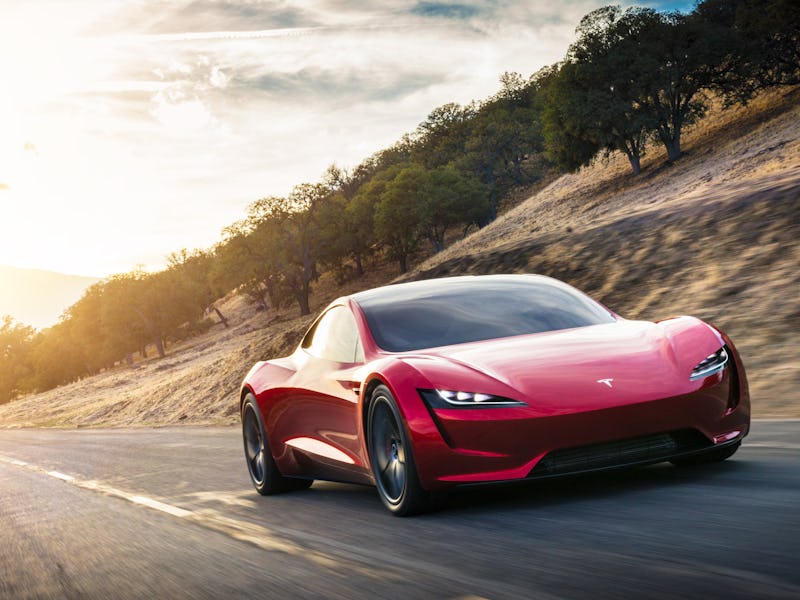Elon Musk says Tesla’s next reveal is big news for Cybertruck and Roadster
The Tesla CEO is about to reveal a historic new advancement for the company, and it could mean big things for Tesla's upcoming vehicles.

Tesla's hotly-anticipated battery advancements will mean big things for Cybertruck and Roadster, according to CEO Elon Musk.
The company will unveil its latest advancements at the Battery Day event Tuesday, which will livestream immediately after the company's annual shareholder meeting. That meeting is scheduled to start at 1:30 p.m. Pacific time. Tesla will livestream both events from its website.
The changes are expected to influence the future of one of the most important components of an electric vehicle. Advancements in battery technology can help reduce prices, increase range, and improve overall longevity — all of which could help Tesla meet its goal of getting more drivers in electric cars.
Ahead of the event, Musk explained via Twitter Monday that the company's biggest announcements will affect its most highly-anticipated vehicles:
"Important note about Tesla Battery Day unveil tomorrow. This affects long-term production, especially Semi, Cybertruck & Roadster, but what we announce will not reach serious high-volume production until 2022."
The tidbit suggests that Tesla's developments will bear the greatest influence on vehicles set to enter volume production at some point in the future. The Semi truck and Roadster supercar were announced in November 2017: while Musk called for the Semi truck to enter volume production back in July, recent comments suggest the Roadster won't hit roads until sometime after the Cybertruck. That latter vehicle, first unveiled in November 2019, is expected to become available in late 2021.
The comments chime with those made by Jordan Giesigle, host of battery-focused YouTube channel "The Limiting Factor." During a May 2020 interview with Inverse, Giesigle explained that Tesla is more likely to focus on adding its new batteries to new vehicles, rather than re-engineering existing mass-market vehicles, like the Model 3 sedan and Model Y compact SUV.
"I think both the Cybertruck and the Roadster have to have this technology in it, anything that's super high performance that depends a lot on power-to-weight ratio," Giesigle said. "Tesla's current vehicles are already the best on the market, so there's no reason to completely engineer the battery pack in the Model 3 and the Model Y."
Tesla Cybertruck.
The Cybertruck and Roadster are predicted to become two of Tesla's most impressive vehicles. The Cybertruck, which starts at $39,900, will offer over 500 miles of range and some 14,000 pounds of towing capacity at the high end. The Roadster, with a base price of $200,000, will offer 0 to 60 mph acceleration times of under two seconds, and a range of 620 miles between charges.
Musk also explained on Monday that, amid rumors that Tesla will start producing its own batteries instead of depending on third-party partnerships, the company expects these deals to continue in the future:
"We intend to increase, not reduce battery cell purchases from Panasonic, LG & CATL (possibly other partners too). However, even with our cell suppliers going at maximum speed, we still foresee significant shortages in 2022 & beyond unless we also take action ourselves. [...] The extreme difficulty of scaling production of new technology is not well understood. It’s 1000% to 10,000% harder than making a few prototypes. The machine that makes the machine is vastly harder than the machine itself."
The Inverse analysis – The comments are an important clarification, ahead of an event that Musk described in April as "one of the most exciting days in Tesla's history." The timeline tempers expectations: Battery Day will unveil some improvements, but it's going to take a couple of years before those changes filter through to the product lineup.
In other words, perhaps: don't put off buying a Model 3.
This article was originally published on